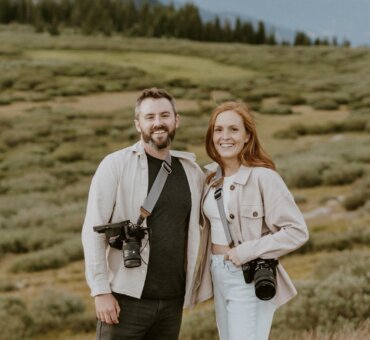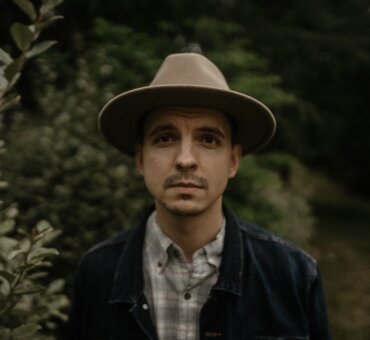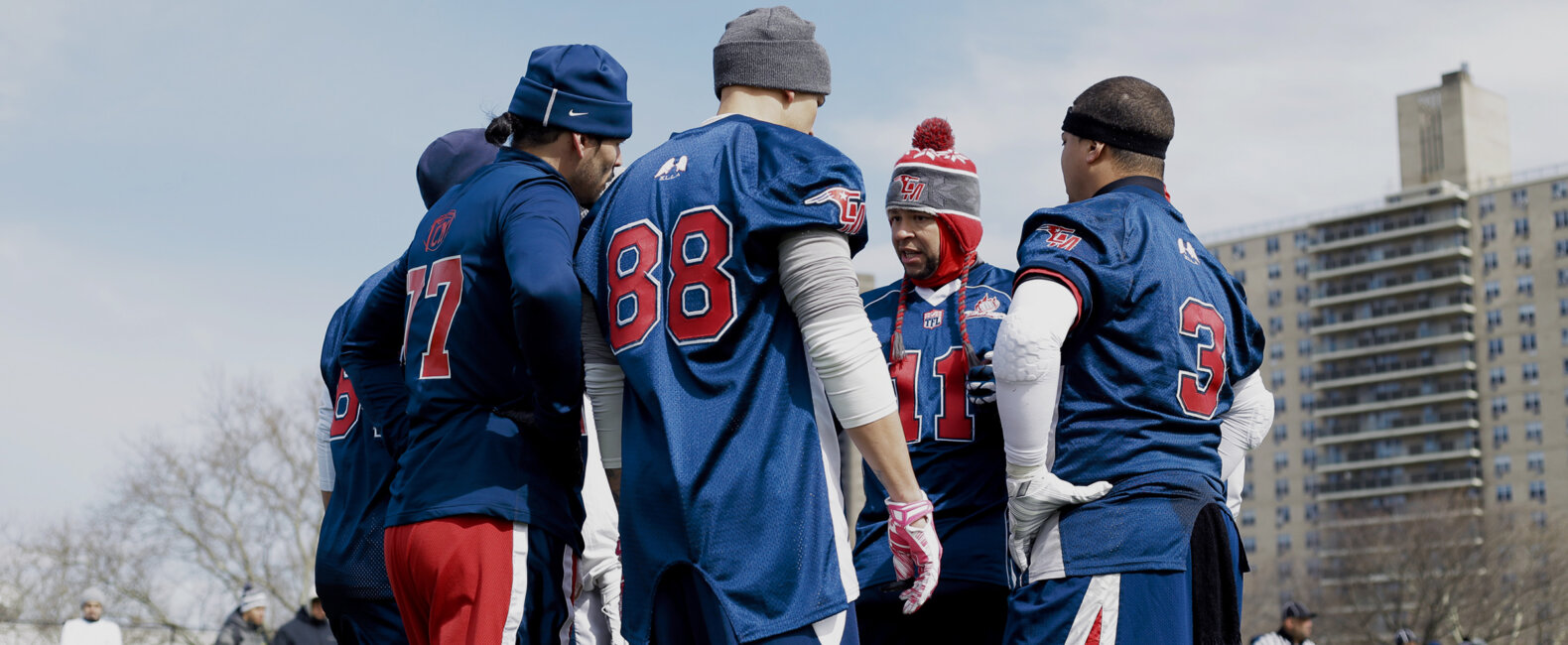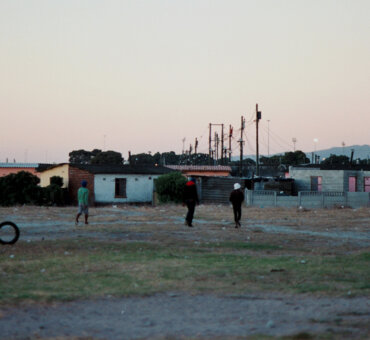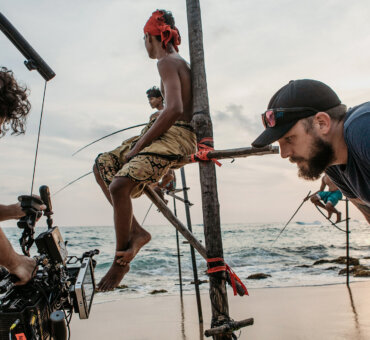There is a painting in France that historians believe is 32,000 years old. The oldest surviving film, on the other hand ⎯ incidentally, also French ⎯ is only 128 years old. A film called Roundhay Garden Scene. 2.11 seconds long. Filmmaking has obviously come a long way since 1888; but compared to painting, it’s still in its infancy. There’s plenty of new territory to explore. It’s only fitting that a painter-turned-filmmaker is one of the people breaking new ground — for example, by creating a documentary about a New York street football team in the style of a Beats by Dr. Dre ad. That’s what Bennett Johnson set out to do, and the result ⎯ Coach Pamz ⎯ is a beautiful statement about life, sports, and the brotherhood of amateur athletes.
Bennett is a U.K. transplant, formally trained painter, and self-taught filmmaker. “I am basically of the Internet age where you can learn everything from YouTube videos,” Bennett told us. “I found the USC film school’s reading syllabus online, bought all the books, and then read them all.” His education method worked. Not only are his films excellent, but also he was recently short-listed for the Cannes Young Director Award.
We talked to Bennett about his latest documentary, his Whiplash-esque art teacher, and what it means to make films like a painter.
Musicbed: You were a painter?
Bennett Johnson: I was a painter in school in the U.K., yes. They had this incredible fine arts program that formed me a lot. Everyone was coming in on Saturdays and Sundays to paint. Even very academic kids were unbelievable painters. We had this Whiplash-style teacher — this bald guy who did Taekwondo. He once threw a painting of mine out the window. I loved it. But painting is very lonely. And it’s hard to communicate to your audience. It becomes very introspective. It’s always about “How do I feel?” Eventually, I knew it wasn’t right for me.
Film seems pretty different than painting. You have to deal with the passage of time rather than just a frozen moment.
Absolutely. I felt that limitation with painting. A lot of my paintings had a narrative edge to them. They were trying to tell a story, but it wasn’t being received. They made for a cool visual, but they didn’t make for a very comprehensible visual. Therefore, they didn’t evoke much emotion in me — and not in the audience either. People probably thought: Huh, cool painting. With film, there seems to be a wider range of what people can receive from it.
How did you find the story for your Coach Pamz film?
Essentially what happened was it was winter in New York, which is always a bit slow. I happened to read an article about a street football league. I got on a train that Saturday and went up to the Bronx. I just walked up to where these guys were playing. They all thought I was the police, but when they heard my accent they realized I was a complete joker. I stuck out like a sore thumb. But they were all so friendly — some of the friendliest people I met in New York. So I started hanging out with them.

Did you tell them right away that you were thinking about doing a film?
I told them quite early, but I didn’t push it until six weeks in. I waited until we had a strong personal relationship to do that. That’s one of the problems with journalism. Nobody is going to be vulnerable and open with you if it’s clear you’re just trying to write a cool story. That’s not what I was there to do. I was genuinely interested in what was happening, and I hung out with them for a very long time. For six weeks I pretty much burned my weekends getting to some of the places where they were playing. One of them was at the very end of the 6th line in the Bronx. But it was so important to hang out with them and build relationships. At first everyone is looking at you, but pretty soon nobody is. They’re all like, “Oh, it’s just Bennett.”
At what point did you know this was a subject you wanted to make a film about?
Well, I was initially excited about the visuals. When you think of New York, you normally think of street basketball. But these guys were playing street football. I used to be quite a serious rugby player, and there is something about the physicality of it that I’m attracted to, knowing your team is willing to sacrifice their bodies for you. That’s the purest form of love. And in this league you could see the power of that. It was changing people’s lives. Pamz grew up in East Harlem. Both of his parents died before he was 10 years old. He killed someone when he was 14. This was an environment where finding love and meaning meant doing terrible things. Now he’s putting all of himself into a sport that provides those two things in a completely different way.
What did they think when you said you wanted to make a film about them?
I framed it as being like a Beats by Dr. Dre commercial — but featuring them. I told them they’d all look really sick. Really aggressive and cool. And they were all like, “Yes, let’s do that.” The thing is, I’m not a traditional documentary filmmaker. I like sports commercials. I think they’re beautiful. And I have the mind-set of a painter: I like to use the brush. I want to use lenses and sound design and music to create something, not just document it. I like being the type of filmmaker who adds color to a story. And we actually played with color a lot on this film. I wanted that intense yellow sodium light that New York has, that dark environment. I wanted to use all of these subconscious elements to add to the overall emotion. Production took three days with just me, a DP, a first AC, a second AC, and a PA running around New York in a van.

How long was post-production?
Quite a long time. We had no money. But that was okay because we had no release date either. So we had plenty of time to pay attention to details. To be a filmmaker you have to be ruthless. You have to be precise and have a high attention to detail. I think we did about 15 drafts of the edit.
Do you think it’s useful to have that much time to second-guess yourself?
David Lynch has described creativity as being like fishing. You can’t just wrestle a fish out of the water. You have to wait for it to bite the line. The longer you have your hook in the water, the more fish you’re going to catch. You give yourself some time to think about things, and suddenly a bunch of new things will hit you.
Are you the type of filmmaker who has a vision for a film and then executes it? Or do things change a lot during the process?
Generally, I can see it ahead of time. If I couldn’t see what it was going to be, I don’t think I’d go after it. Do you know the Myers-Briggs test?
Yes.
I’ve been thinking about this a lot lately. I am an ENFJ (extraversion, intuition, feeling, judgement). But a lot of filmmakers are a P instead of a J. They’re perceptive instead of judging, which means they can feel out the material as they go. Sometimes you can feel how a filmmaker was almost learning the story for the first time in the shots. I marvel at that. It’s a beautiful way to make films. But I’m not perceptive; I like knowing everything ahead of time, consuming all of the information, and then envisioning something out of it. The idea of following a story doesn’t resonate with me. I like to stage things as a way of creating something authentic and real.
A painterly approach to filmmaking maybe.
That’s the best way to describe it. When you paint something, you start with an idea of what you want to do. Then you do a bunch of reference sketches. The more you iterate, the closer you get to it ⎯ whatever it is. Then you do a few small paintings. And only thendo you do your feature painting. That’s how painters worked 450 years ago. They felt it out with judgment. And by the time they went to their huge canvas, they had a real grasp of what was going on. I like to think I work the same way.





































































